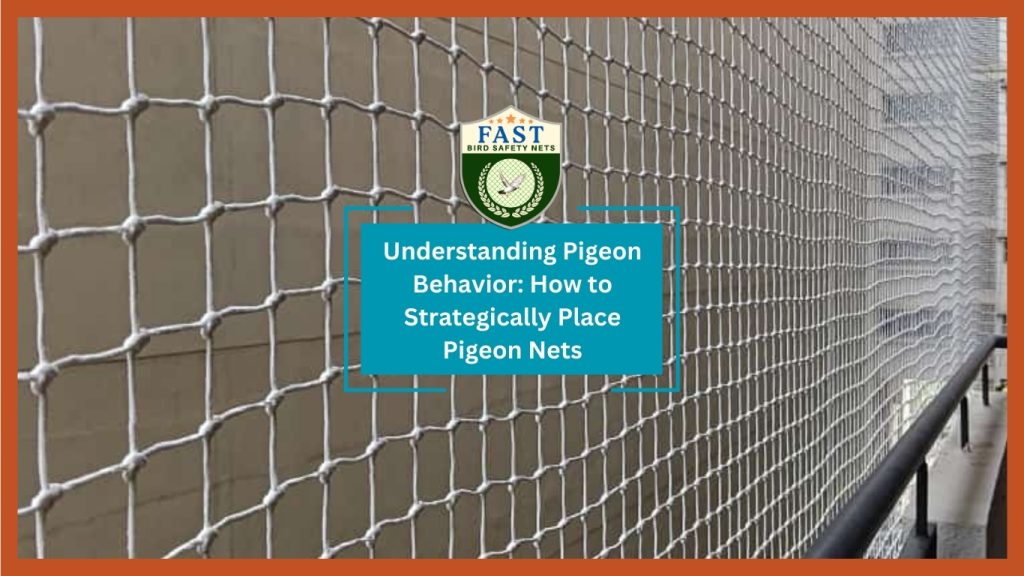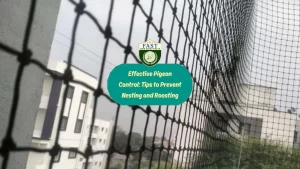Pigeons, often considered urban pests, can wreak havoc on buildings and outdoor spaces. Understanding their behavior is crucial for effectively deterring them. Here’s a guide on strategically placing pigeon nets to keep these birds at bay.
- Pigeon Behaviour Insights
Effective pigeon control begins with an understanding of pigeon behavior. Pigeons are attracted to areas with easy access to food, water, and shelter. They prefer roosting and nesting in elevated areas such as ledges, beams, and rooftops. By recognizing these tendencies, you can identify the areas most susceptible to pigeon activity.
- Assessing Vulnerable Areas
Conduct a thorough assessment of your property to identify vulnerable areas where pigeons may roost or nest. Look for signs of pigeon activity such as droppings, feathers, and nesting materials. Common areas of concern include balconies, window sills, air conditioning units, and building ledges.
- Choosing the Right Nets
Selecting the appropriate pigeon nets is essential for effective pigeon control. Opt for durable nets made from high-quality materials such as polyethylene or nylon. Ensure the mesh size is small enough to prevent pigeons from squeezing through while allowing for adequate airflow and visibility.
- Strategic Placement of Nets
Once you’ve identified vulnerable areas, strategically place pigeon nets to block access points and deter pigeons from roosting or nesting. Focus on covering areas where pigeons are most likely to perch or land, such as ledges, beams, and rooftop edges. Pay attention to gaps and openings where pigeons could enter or exit the area.

- Securing Nets Properly
Proper installation is crucial for the effectiveness of pigeon nets. Secure the nets tightly to prevent sagging and ensure a snug fit. Use sturdy support structures such as hooks, cables, or brackets to anchor the nets securely in place. Inspect the installation regularly to check for any signs of damage or wear and tear.
- Maintenance and Monitoring
Regular maintenance and monitoring are essential for keeping pigeon nets in optimal condition. Inspect the nets periodically for tears, holes, or signs of pigeon activity. Clean the nets as needed to remove debris and accumulated droppings. Monitor the effectiveness of the nets and make adjustments as necessary to reinforce weak spots or address new pigeon activity.
- Professional Assistance
If you’re unsure about installing pigeon nets yourself, consider seeking professional assistance. Experienced technicians can assess your property, recommend the best pigeon control solutions, and ensure proper installation for optimal effectiveness. Professional services may also offer ongoing maintenance and monitoring to keep your property pigeon-free.
- Compliance with Regulations
Before installing pigeon nets, familiarize yourself with any local regulations or restrictions regarding bird control measures. Ensure your installation complies with all relevant laws and regulations to avoid any legal issues.
Conclusion
Strategically placing pigeon nets is essential for effectively deterring pigeons and protecting your property from damage and health hazards associated with pigeon activity. By understanding pigeon behavior and strategically placing nets in vulnerable areas, you can create a pigeon-free environment and enjoy peace of mind.
For expert installation and effective control, trust Fast Safety Nets. With our high-quality materials and skilled technicians, we ensure precise placement and secure anchoring, keeping your property free from unwanted avian visitors. Don’t let pigeons disrupt your peace of mind – choose Fast Safety Nets for reliable pigeon control solutions.






